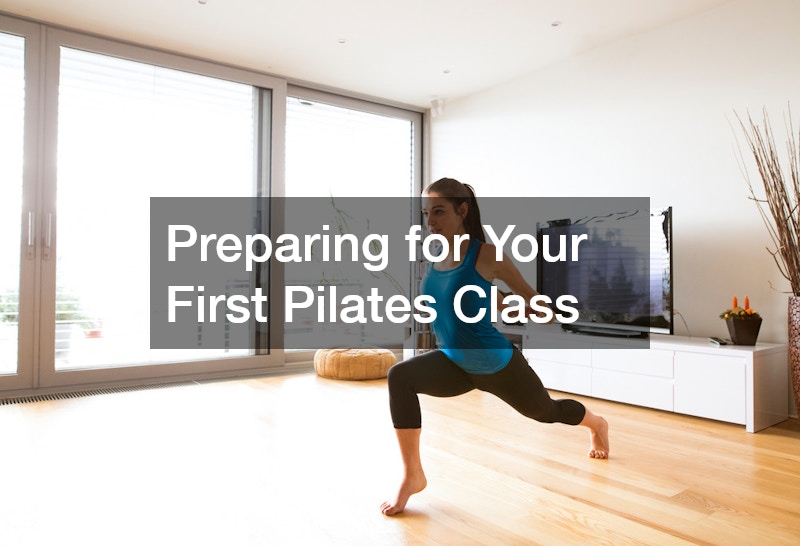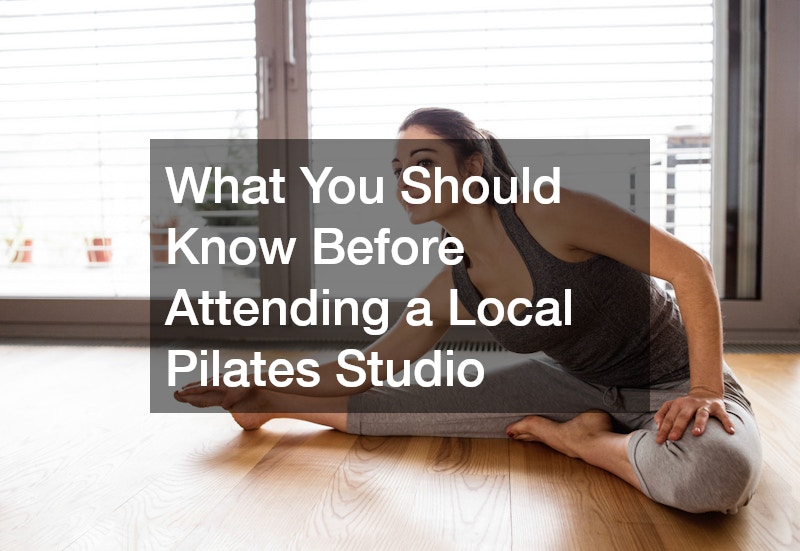Before diving into your first class at a local Pilates studio, it’s essential to understand the basics of what Pilates is. Pilates is a form of low-impact exercise that focuses on strengthening muscles while improving postural alignment and flexibility. It was developed by Joseph Pilates in the early 20th century and is practiced worldwide today.
At its core, Pilates emphasizes controlled breathing, precise movements, and a balanced body. Familiarizing yourself with these foundational principles can enhance your understanding and appreciation of the practice.
Different local Pilates studios may offer classes that vary in style, such as mat Pilates or equipment-based Pilates using machines like the Reformer. Understanding the types of classes offered can help you choose the right style that matches your fitness goals. While mat Pilates focuses on core tasks using body weight, equipment-based sessions incorporate tools to add resistance and challenge. You may want to try both to see which suits you better. Additionally, knowing the variety of classes can give you more confidence when you step into a new environment.
It’s equally important to understand the benefits that Pilates provides. Regular Pilates practice can aid in developing core strength, improving posture, and enhancing flexibility. It can also help manage stress and improve mental clarity by fostering a mind-body connection. At a typical local Pilates studio, you’ll also find that the atmosphere supports community building and personal wellness goals. By understanding these benefits, you are more likely to commit to regular practice, which can drastically improve your quality of life over time.
Preparing for Your First Pilates Class

Once you’ve determined the right local Pilates studio for you, it’s time to prepare for your first class. Begin by wearing comfortable, fitted clothing that allows you to move freely while enabling the instructor to observe and correct your form. Though it’s not always mandatory to wear Pilates socks with grips, they can provide additional stability, especially on slippery surfaces. Also, remember to bring a water bottle to stay hydrated throughout the session, which is crucial since Pilates, like any form of exercise, can lead to sweating. These basic preparatory steps can contribute to a smoother and more enjoyable introduction to Pilates.
Communication with the instructors at your local Pilates studio is key for a personalized experience. Before class, introduce yourself and inform the instructor of any injuries or limitations you might have. This information will help the instructor tailor the session to your needs and safeguard against any potential injuries. Don’t hesitate to ask questions—whether it’s about a specific pose or methodology being taught. By building relationships with your instructors, you’ll find a supportive network encouraging your progress and personal development.
Familiarizing yourself with the class structure can also provide comfort and confidence. Typically, a class at a local Pilates studio will start with a warm-up, followed by targeted exercises, and end with a cool-down. Knowing this schedule can mentally prepare you for the session, easing any anxiety about the unknown. It’s also beneficial to understand the etiquette expected in these classes; respecting others’ space and maintaining a quiet atmosphere fosters a positive communal environment. By aligning yourself with the flow and etiquette of the class, you contribute to a respectful, focused space for everyone involved.
What You Can Expect from a Local Pilates Studio
Local Pilates studios vary, but there are common elements you can typically expect. For example, many studios prioritize creating an environment that promotes relaxation and focus. From the soothing color palettes to the carefully selected background music, every element at a local Pilates studio is designed to enhance your experience. The classes are usually small, which enables instructors to provide more individualized attention and modifications, ensuring participants receive instructions tailored to their needs. Such settings can foster a sense of calmness and introspection, which aligns beautifully with Pilates’ core principles.
Another vital aspect of local Pilates studios is the diversity of clientele. You’ll find people of all ages, fitness levels, and backgrounds attending classes, all seeking the unique benefits Pilates offers. This diversity enriches the learning experience, as practitioners share a common goal of health and well-being, despite their differences. Observing the progress of others in your local Pilates studio can be inspiring and motivating, serving as a reminder that progress is personal and subjective. Different perspectives and experiences enhance the community-centric vibe that many local studios cherish and promote.
Additionally, you can expect a structured approach to your progression within a local Pilates studio. From beginner to advanced levels, instructors work on incrementally challenging participants. This structure ensures that as your skills and strengths develop, your practice becomes increasingly sophisticated and rewarding. Many studios also offer workshops or specialty classes to explore areas like prenatal Pilates or sport-specific conditioning, broadening the horizons for further exploration in your fitness journey. By attending consistently, you’ll likely notice advancements not just in physical fitness, but also in your mental and emotional well-being.
By understanding these aspects of attending a local Pilates studio—knowing the basics, preparing accordingly, and setting expectations—you can embrace this journey with motivation and confidence. Your Pilates practice can become a cornerstone for physical, mental, and emotional health improvement, providing a pathway to a well-rounded, healthy lifestyle.

